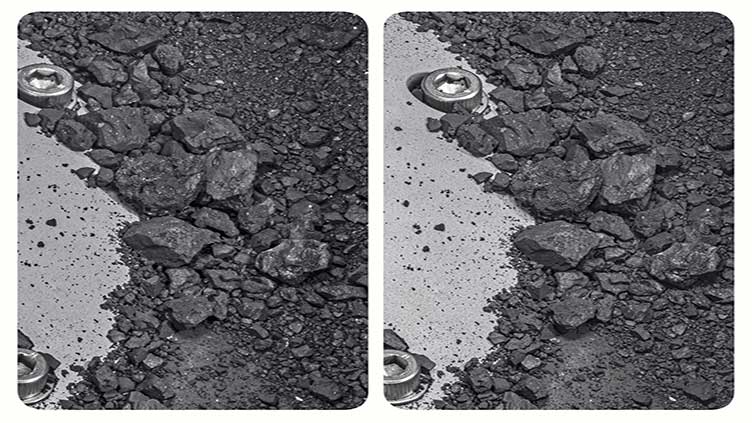Nasa finally cracked open its asteroid capsule

Technology
Nasa has been waiting for this moment since September
(Web Desk) - Months after Nasa's OSIRIS-REx spacecraft returned to Earth a capsule filled with grit and dust from an asteroid as old as the solar system, the agency has finally managed to get the lid off and see what's inside.
The delay in opening the capsule was caused by two jammed fasteners — but on Jan. 10, NASA revealed in a recent blog post, its scientists finally prized the lid from the capsule.
Inside is precious cargo: Pristine rocks and minerals that could act like a Rosetta Stone for the solar system and all that's in it, including life on Earth.
Now, the agency is ready to show the world what it has brought back from the asteroid Bennu, releasing a new photo of the inside of the capsule.
"Our engineers and scientists have worked tirelessly behind the scenes for months to not only process the more than 70 grams of material we were able to access previously, but also design, develop, and test new tools that allowed us to move past this hurdle," said Eileen Stansbery, division chief for ARES (Astromaterials Research and Exploration Science) at NASA's Johnson Space Center, in a statement.
"The innovation and dedication of this team has been remarkable. We are all excited to see the remaining treasure OSIRIS-REx holds."
Speaking previously with The Messenger, leading scientist on the OSIRIS-REx mission and Arizona University professor Dante Lauretta said his greatest wish would be to discover some sign of early biology in the rocks, but regardless of whether that dream comes true, the sample will help unravel some of the mysteries of our solar system.
"Objects like Bennu likely delivered the water that's in our oceans and the molecules that make up our air, like nitrogen and carbon dioxide and really, critically, the organic material that led to the origin of life," Lauretta explained.
Already, the team had found signs of water in errant pieces of asteroid that had got caught up in the rest of the spacecraft and not the main interior capsule.
Now that the sample is finally open, NASA and its team of scientists will work to safeguard the sample and make it available to scientists all over the world to analyze and study. NASA said it expects to do so later this year.


